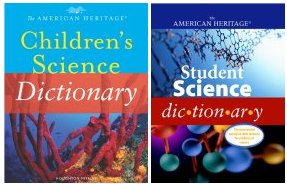Fear Matters Additional Information
Wish that Halloween came around more than once a year? For facts, trivia, and historical information about the holiday, see en.wikipedia.org/wiki/Halloween (Wikipedia).
To learn more about red-eyed treefrogs, visit www.nature.org/magazine/autumn2007/
features/art21938.html
(Nature Conservancy).
For basic information about grey wolves, see www.defenders.org/wildlife_and_habitat/wildlife/gray_wolf.php (Defenders of Wildlife).
To learn more about how wolves shape ecosystems, with lots more wolf links, visit www.cof.orst.edu/wolves/(Oregon State University).
To learn more about Yellowstone National Park, go to www.nps.gov/yell/ (National Park Service).
For a school project on wolf reintroduction in Yellowstone National Park, see www.powayschools.com/projects/mt&r/ConflictYellowstoneWolf.htm
(Poway Unified School District).
Cutraro, Jennifer. 2007. A dangerous meal. Science News for Kids (Oct. 17). Available at http://www.sciencenewsforkids.org/articles/20071017/Note2.asp.
Sohn, Emily. 2005. A sense of danger. Science News for Kids (April 13). Available at http://www.sciencenewsforkids.org/articles/20050413/Feature1.asp.
______. 2005. The wolf and the cow. Science News for Kids (Jan. 26). Available at http://www.sciencenewsforkids.org/articles/20050126/Feature1.asp.
______. 2004. Ganging up to grab more food. Science News for Kids (March 31). Available at http://www.sciencenewsforkids.org/articles/20040331/Note3.asp.
______. 2003. Watching for wildfires in Yellowstone. Science News for Kids (Sept. 24). Available at http://www.sciencenewsforkids.org/articles/20030924/Feature1.asp.
Teachers, access ecology-related lesson plans here: www.teach-nology.com/teachers/lesson_plans/science/biology/ecology/ (TeAchnology).
Books recommended by SearchIt!Science:
![[book]](https://www.sciencenewsforstudents.org/wp-content/uploads/2019/11/a1585_b1809.jpg) |
Once a Wolf: How Wildlife Biologists Fought to Bring Back the Gray Wolf— Stephen R. Swinburne
Published by Houghton Mifflin Co., 1999.
Wolves used to have a bad reputation. So, no one thought that there was anything wrong with killing them. That was until the 20th century. Learn what made conservationists turn that attitude around. See the resistance they met. Read how they reintegrated wolves into Yellowstone National Park. |
![[book]](https://www.sciencenewsforstudents.org/wp-content/uploads/2019/11/a1585_b2824.jpg) |
Extremely Weird Frogs— Sarah Lovett
Published by John Muir Publications, 1991.
After a rainstorm in the Australian Outback, the water-holding frog looks like a pile of water balloons. It absorbs water in special sacs underneath its skin, and then it burrows into a cave and makes a cocoon around its body to hold in the water. Because of this method of conserving water, these frogs can go 2 or 3 years between rainfalls. In this book, you’ll come face to face with the water-holding frog and 43 other unusual frogs from around the world. There are descriptions along with large color photographs of the pygmy marsupial frog, the gliding frog, the tomato frog, the poison-dart frog, and others. Color drawings are included, along with sidebars that feature unusual facts about these weird hoppers. The book also has a combined glossary/index. |
![[book]](https://www.sciencenewsforstudents.org/wp-content/uploads/2019/11/a1585_b3815.jpg) |
Food Chains — Alvin Silverstein, Virginia Silverstein, Laura Silverstein Nunn
Published by Twenty-First Century Books/Millbrook Press, 1998.
“Every organism in a community has a niche,” explains this book, and there are three types of niches: producers, consumers, and decomposers. Producers, a category that most plants fall into, are organisms that provide food for other members of the community. Consumers eat other organisms, and decomposers get rid of the dead organisms. Explore these relationships in this book, which includes color photos and diagrams to illustrate concepts such as the energy flow through food chains, the web of life, and food energy in ecological food pyramids. Also, learn about biogeochemical cycles, such as the oxygen cycle and the phosphorus cycle, and discover what happens when a foreign species invades a food chain. Finally, find out how human pollution may affect the species on the top of the food chain the most—us. |
Power Words
ecology The scientific study of the relationships between living things and their environments.
ecosystem An ecological community made up of plants, animals, and microorganisms together with their environment. A pond or a rainforest are each examples of complex ecosystems.
embryo 1. An animal in its earliest stages of development, especially in the uterus of female mammals, or, in egg-laying animals, an animal developing in the egg until it is hatched. 2. A plant in its earliest stages of growth, when it is contained within a seed.
Copyright © 2002, 2003 Houghton-Mifflin Company. All rights reserved. Used with permission.
